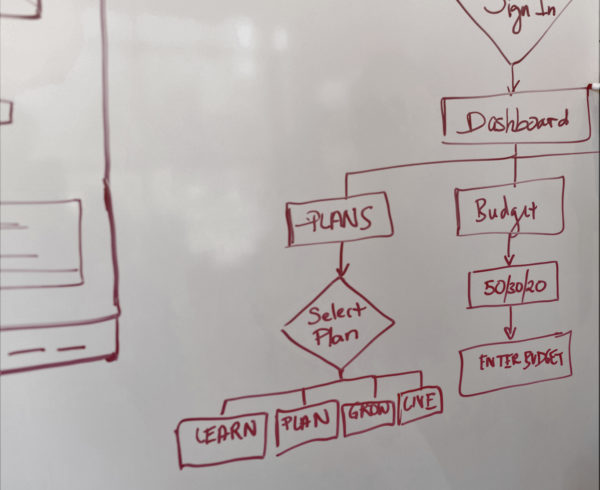Essential to the execution of international trade between buyers and sellers are Incoterms®, or International Commercial Terms. Incoterms® rules exist to provide specific guidance to individuals participating in the daily import and export of global trade.
These rules account for the assumed cost risks and responsibility for importers or buyers at each point of the supply chain.
Broadly speaking, Incoterms® can be divided into four groups, arranged below starting with those that offer the most buyer control to those which gives the seller primary control:
- Ex–Works
- Seller makes product available at a designated location. Buyer covers transport costs
- F terms
- Free Carrier (FCA)
- Free Along Ship (FAS)
- Free On-Board (FOB)
- C terms
- Cost and Freight (CFR)
- Cost, Insurance and Freight (CIF)
- Carriage Paid to (CIP)
- D terms
- Delivered at Terminal (DAT)
- Delivered at Place (DAP)
- Delivered Duty Paid (DDP)
D Terms, especially DDP, give full responsibility and control to the seller. For the buyer, this implies a simplified buying process, with minimal risk and responsibilities in bringing goods to a selected place.
However, importers should always consider whether a chosen Incoterms® is the right choice for their business. Based on work conducted for a major South African organisation which relies on import-inputs, below we will discuss DDP Incoterms® and how their use can be a significant weakness if deployed by an organisation unsuited or unable to account for the significant costs it can generate.
DDP Incoterms® and its risks
High-performing businesses consistently seek to eliminate inefficiencies and reduce costs where possible. They can do through making data-informed, real-time decisions based on the latest information and for those businesses dependent on imports, optimising their business against their value chain.
As noted above, DDP shifts responsibility and supply chain control to the seller or exporter within a transaction. For businesses with limited administrative capability, it offers a quick-to-implement means to import needed product or service offering.
Our experience shows that DDP can potentially exacerbate supply chain costs and inefficiencies, because while DDP offers a fast out-the-box transaction solution, it has major ramifications on baseline costs and supply chain visibility. This is not as much a flaw in approach or philosophy, but rather a consequence of the characteristics found within the DDP Incoterms® framework.
Inflated logistics costs
DDP leaves the seller fully responsible for all logistics activities within a transaction in bringing goods to a nominated place. However, the seller does not inherently prioritise the best interests of the buyer and can pass on the logistics costs. The seller’s incentive is low to perform a regular and rigorous procurement process so that value for money is achieved when interacting with transporters and freight forwarders.
For example, using DDP, the seller can send less-than-full container loads in the case of sea freight or trucks not filled in the case of road freight. As our work demonstrated, freight utilisation of 50% versus 80% can lead to costs rising by 18% to transport a container to the port of Durban from China, inflating delivery cost, which the seller passes on to the buyer.
Another potential pitfall is transport mode selection. If a supplier unnecessarily chooses air instead of sea freight, the cost increase can be extreme, with air freight typically transported at R45 per kgas opposed to R1.02 per kg, for sea freight. Ultimately, these costs are borne by the importer, who either absorbs them or is forced to pass them onto the end user.
In cases where the seller conducts a procurement process, the seller might not necessarily pass on any saving to the buyer. This is especially true if the goods in question can be sourced from different suppliers versus single suppliers, leading to the buyer often paying inflated logistics costs.
Depending on the frequency and volume of transactions, this inflation could translate into millions of Rands.
Lack of supply chain visibility and flexibility
Supply chain visibility (SCV) provides important information that a buyer can use to make timely decisions that have cost implications. However, within the DDP framework, SCV is lacking as the exporter or seller holds primacy where SCV is concerned. This can lead to the following effects:
- Unnecessarily high levels of safety stock
The lack of SCV creates a high degree of uncertainty in terms of stock availability. This leads to businesses keeping high levels of safety stock, leading to increased leasing costs for storage. This leads to higher working capital requirements and operating costs. A client, in one instance, had approximately R350 million worth of excess inventory – after calculating what it required for a reasonable safety stock buffer – due to a lack of SCV, locking in capital that could have been deployed elsewhere. - Lack of data-based decision making
When information about your supply chain is readily available, forward planning can occur supported by informed decision making, offering importers a degree of flexibility in the case of supply chain constraints. This helps a business deal with, or even avoid, supply chain constraints that might arise, which has financial implications. - Meeting customer expectations
While a back-end response to lack of SCV is having the necessary stock in place (at a cost), the market effect is that it is more difficult to meet customer expectations. As customer expectations change, it becomes increasingly difficult to adjust their requirements when a picture does not exist regarding how the product reaches the customer, and the cost that needs to be borne per unit.
Conclusion
We estimate that DDP only becomes a viable Incoterms® option for businesses importing less than 124 twenty-foot containers per year at volumes of weight capacity of 70% or above, reducing the risk to the end-user from both a cost and SCV perspective.
If an importer’s needs exceed these limits, the real costs of using DDP Incoterms® can become a significant drag upon an organisation’s balance sheet. If new Incoterms® are required, much like DDP, their strengths and weaknesses must be considered.
In a follow-up piece, we will show how we helped a large South African client select a new Incoterms® for their business and why that specific choice was made.
To find out more how the Next-Gen Operations team can help your supply chain be fit for purpose, contact them at nextgen.operations@letsema.co.za, connect with Letsema on LinkedIn or call 011 233 0000. You can also learn more about the Next-Gen Operations team.









